Local Trees: The Enchanting Dogwood
Ideally, you'd be reading this in very early spring, when the dogwood bloom is beginning to work its elegant magic in the older neighborhoods fanning out from Lower Bidwell Park and downtown Chico. Their flowers bloom before dogwoods leaf out, so the blooms appear to float, suspended on slender, graceful branches. But now, although their bloom time is over for the year, the new foliage on dogwoods makes them attractive landscape trees, creating filtered shade in gardens and yards across town.
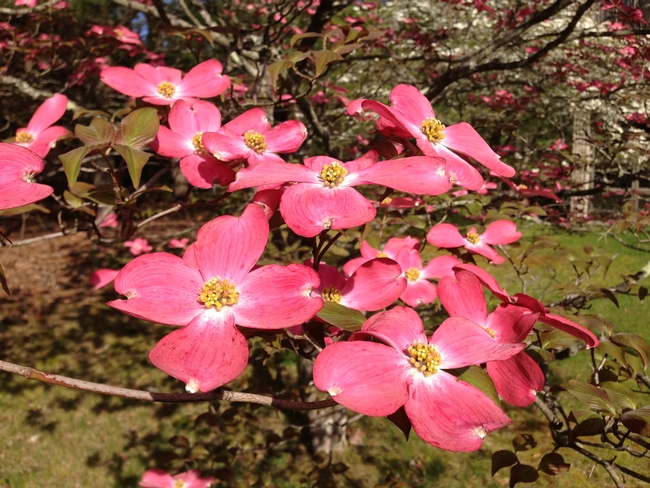
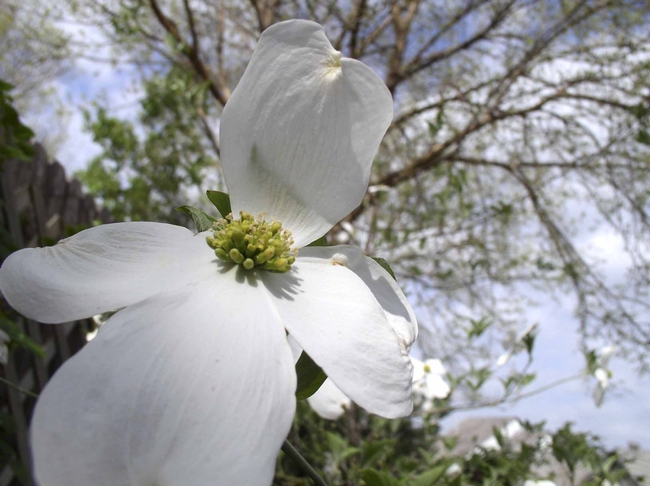
What we see as “flower petals” on the dogwood are technically bracts (modified or specialized leaves) surrounding a bunch of very small, tightly clustered umbel shaped flowers. The leaf itself is a simple, untoothed bit of beauty, distinctive for its visible veins curving as they extend to the margins of the leaf. In fall, the leaves change to an attractive reddish-purple or reddish-brown before dropping. Its bright colored berries are actually drupes, a fleshy fruit with thin skin and a central stone containing multiple seeds. These “berries” provide food to many bird species, and are also utilized by some butterflies and moths. Depending on the species, berries range from very tart and mildly toxic to humans, to tasteless, to slightly sweet and somewhat palatable.
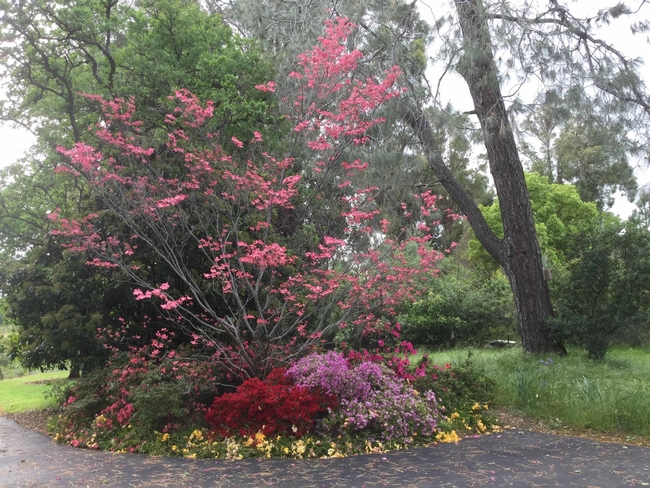
When in the wild, flowering dogwood can typically be found decorating the understory of forest edges, and can also occur on dry ridges. Most of the wild trees have white bracts, but some range from pink to rosy to an almost true red.
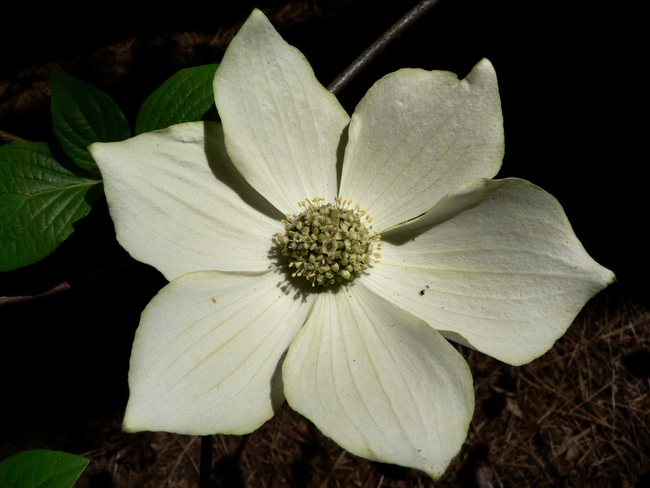
Nuttall's namesake dogwood species is commonly known as western dogwood, mountain dogwood, and Pacific mountain dogwood, as well as Pacific dogwood. This species is native to a large swath of western North America, sweeping down the continent from southern British Columbia to southern California, with an isolated population cropping up in central Idaho. On a California map, its distribution pattern looks like a large cane. The short, hooked end starts in the coast range north of the San Francisco Bay, thickening as it bends east through the Klamath and Siskiyou mountains, with the straight side of the cane extending south through the western slopes of the Cascades and Sierra Nevada mountains to the southern end of the great Central Valley. A small distribution also occurs in the southwestern corner of the state.
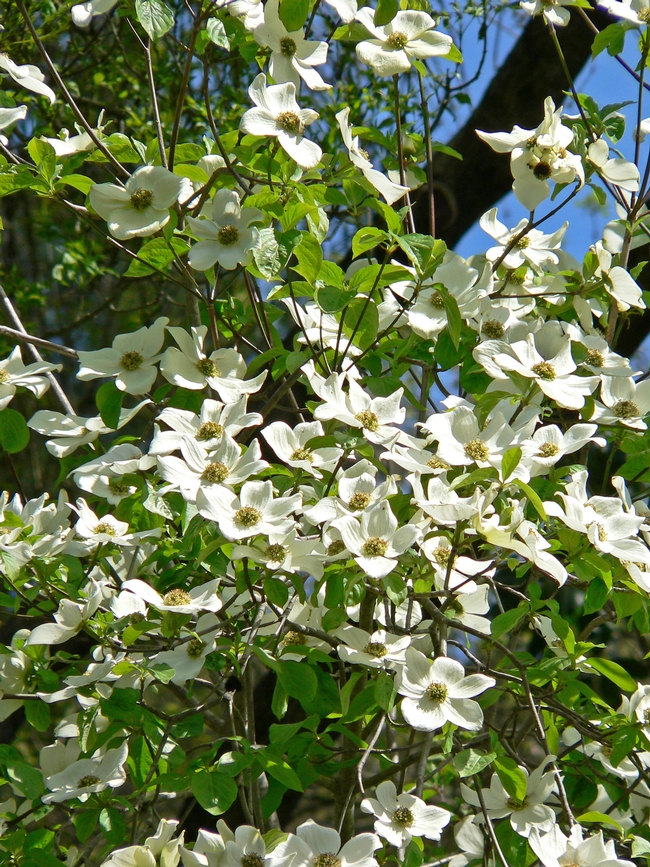
Besides its timeless aesthetic appeal, the Pacific dogwood has various utilitarian functions. It was an important plant for the Native tribes of the continent's west coast. Medicinally, the bark was used as a laxative, a tonic, an antiseptic, and for relief of stomach pain. Peeled twigs provided natural toothbrushes, and smaller branches were sometimes used in baskets. Today the wood of the Pacific dogwood is often used for fashioning items such as tool handles and cutting boards because of its hard, strong wood and beautiful tight grain. It has also been used to make thread spindles, golf club heads, and piano keys.
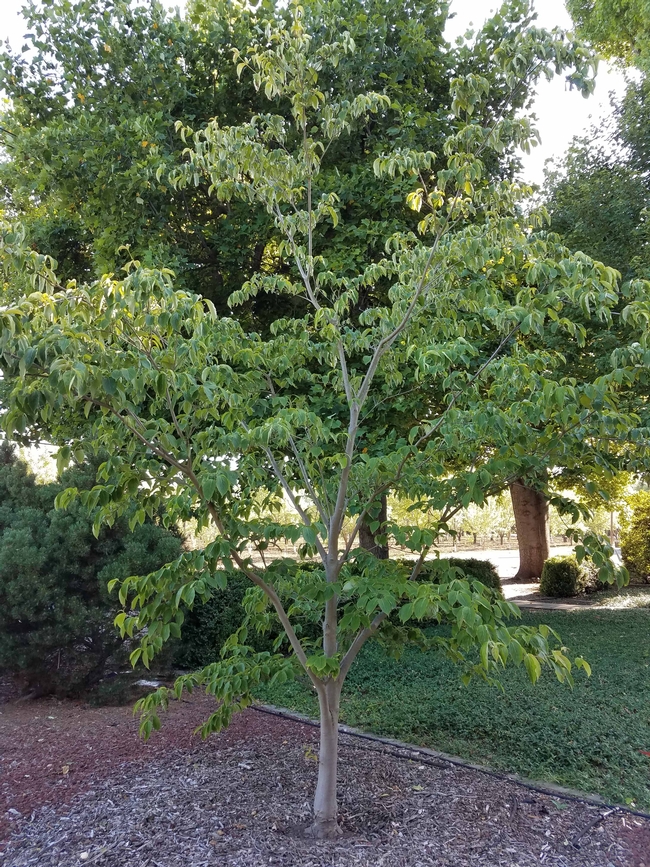
I love the ethereal beauty of the dogwood. Since a large number of cultivated dogwood trees grace our area, evidently so do many others. In fact, dogwood was among the top choices for America's National Tree in a nationwide survey hosted by the Arbor Day Foundation, coming in third behind the oak and redwood: a very respectable ranking!
For more information on gardening in our area, visit the Butte County Master Gardener web page at: http://ucanr.edu/sites/bcmg/. If you have a gardening question or problem, call our Hotline at (530) 538-7201 or email mgbutte@ucanr.edu.
Photo Credits:
Cornus nuttallii in bloom by Stan Shebs: http://commons.wikimedia.org/wiki/User:Stan_Shebs
Cornus nuttallii closeup of flower by Walter Siegmund - The small flowers are in a dense cluster surrounded by large white bracts. Own work, CC BY 2.5, https://commons.wikimedia.org/w/index.php?curid=1724799
Cornus florida closeup of pink flower by Famartin - Own work, CC BY-SA 3.0, https://commons.wikimedia.org/w/index.php?curid=28041080
Flowering dogwood bracts by UC ANR
Cornus florida or Eastern dogwood by Brent McGhie
Stellar Pink, a cross between a florida and kousa dogwood by J. Alosi